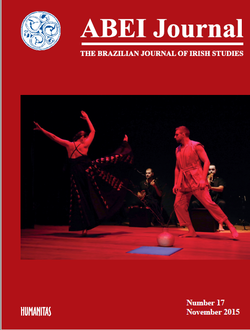W. B. Yeats and Gordon Craig: Collaborations and rehearsals towards the theatre of the future
DOI:
https://doi.org/10.37389/abei.v17i0.3535Abstract
The artistic partnership between the Irish poet W. B. Yeats and the English set designer and theatre theoretician Gordon Craig, short though it was and limited to only a few collaborations, was important for anticipating some of the principal developments in modern theatre and reverberates until today on the contemporary scene. Although it occurred between 1910 and 1913, and was particularly intense in 1911, when some productions were staged at the Abbey Theatre in Dublin with texts by Yeats and a strong influence from Craig, the partnership was born long before, out of the real friendship between the two artists, and continued long afterwards beyond those joint projects. My objective here is to tell a little of this story, highlighting how Yeats’s absorption of Craig’s ideas had a decisive influence on the development of his play-writing, with the so-called plays for dancers, and, further, how these may be perceived as rehearsals, or laboratory experiments, for the revolution in dramatic practice that was to take place in the theatre of Samuel Beckett. This re-examination of Craig’s project, known as Scene, patented in four countries in 1910 and warmly embraced by Yeats, will also make it possible to present connections with recent manifestations of the contemporary theatre, conceived as the expanded scene, in a frank dialogue with the visual arts. Thus I shall argue that Yeats and
Craig, each with their own interests, was a rehearsal, at the beginning of the twentieth century, of practices and proposals which anticipate contemporary theatricality, as seen in the first decades of the twenty-first century.
Keywords: W. B. Yeats; Gordon Craig; modern theatre; plays for dancers.


